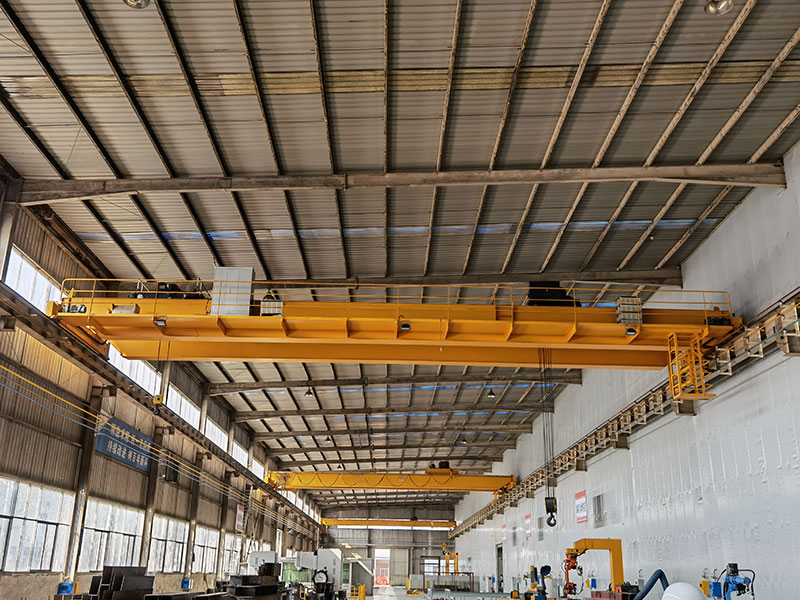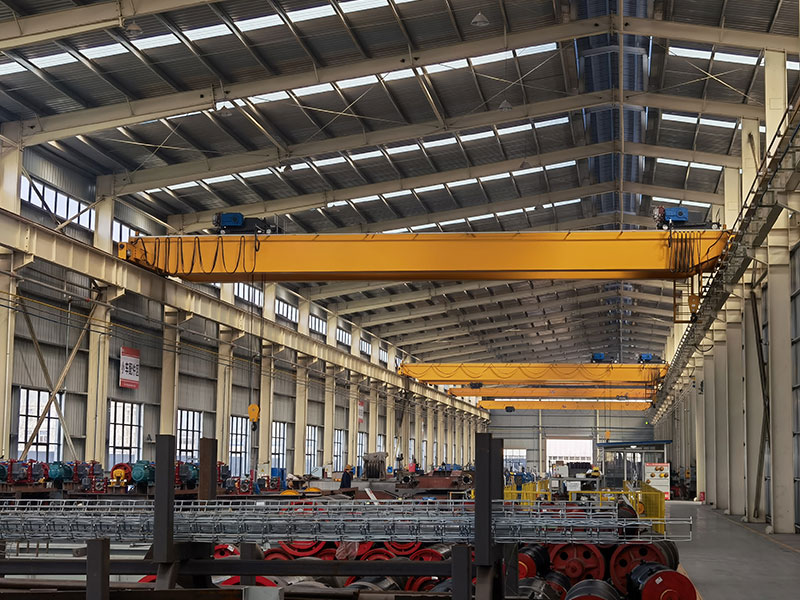Overhead cranes are indispensable in various industries for lifting and transporting heavy loads with ease and precision. These powerful machines, however, come with inherent risks that demand strict safety protocols and procedures to mitigate potential accidents. When it comes to operating a 25-ton overhead crane, the stakes are even higher due to the immense weight and potential consequences of mishaps. In this article, we will delve into essential safety measures for operating 25-ton overhead cranes, ensuring the well-being of both operators and the workplace.

Comprehensive Training and Certification
Before an operator even steps foot near a 25-ton overhead crane, comprehensive training is an absolute must. Inadequate training is a leading cause of crane accidents. Operators should be well-versed in crane operations, safety procedures, and emergency protocols.
Formal Training Programs: Employers should invest in formal training programs conducted by certified instructors. These programs should cover crane operation, load control, inspections, and emergency procedures.
Hands-On Training: Practical, hands-on training is crucial. Operators must have ample time to practice their skills under the supervision of experienced trainers.
Certification: Only certified individuals should operate 25-ton overhead cranes. Certification ensures that operators have met specific competency standards and are well-versed in safety measures.
Regular Maintenance and Inspection
Routine maintenance and inspection of overhead cranes are vital to ensure their safe operation. Neglecting maintenance can lead to equipment failure, posing serious risks to both personnel and property.
Scheduled Inspections: Establish a regular inspection schedule and adhere to it diligently. Daily pre-shift inspections, monthly inspections, and annual comprehensive inspections are essential.
Documented Records: Maintain detailed records of all inspections and repairs. This documentation can provide insights into the crane’s health and help identify potential issues before they become critical.
Prompt Repairs: Address any issues or damage promptly. Never operate a 25-ton overhead crane if you suspect a problem or if it has not been deemed safe through inspection.

Load Management and Rigging
Proper load management is a fundamental aspect of 25 ton double girder overhead crane safety. Misjudging loads or using faulty rigging equipment can lead to catastrophic accidents.
Weight Assessment: Accurately determine the weight of the load before lifting. Overloading a crane can lead to structural failure and accidents.
Rigging Equipment: Ensure that the rigging equipment used is in good condition and suitable for the task at hand. Regularly inspect slings, hooks, and other rigging components.
Load Charts: Familiarize operators with load charts specific to the crane model. These charts provide crucial information about load capacity under various conditions.
Clear Communication
Effective communication is essential when operating 25-ton overhead cranes, especially in busy industrial settings where multiple workers are involved.
Hand Signals: Establish clear and standardized hand signals for communication between the crane operator and ground personnel. Ensure that all team members are familiar with these signals.
Two-Way Radios: In noisy environments or when distances are significant, use two-way radios for communication. Ensure that they are in good working order and that operators are trained to use them effectively.
Avoid Distractions: Crane operators should remain focused on their tasks and avoid distractions. Communication should be precise and limited to essential information.
Environmental Considerations
Environmental factors play a significant role in crane safety. Operators must be vigilant and adapt to changing conditions.
Weather Conditions: Strong winds, rain, snow, and extreme temperatures can impact crane stability and load control. Operators should be aware of weather forecasts and adjust their operations accordingly.
Obstacles and Clearances: Ensure that the area around the crane is clear of obstacles, and maintain proper clearances to prevent collisions with structures or equipment.
Ground Conditions: Assess the ground or floor where the overhead lifting crane will operate. Uneven or unstable surfaces can affect crane stability and should be addressed.
Emergency Response Planning
Despite all precautions, emergencies can still occur. Having a well-defined emergency response plan in place is essential for minimizing the impact of accidents.
Evacuation Procedures: Establish clear evacuation procedures for the crane operator and surrounding personnel in case of an emergency.
First Aid and Medical Support: Ensure that there are adequate first aid supplies on-site, and personnel are trained to provide basic first aid. Have a plan for rapid medical response in case of serious accidents.
Incident Reporting: Implement a procedure for reporting incidents and near misses. This information can be invaluable for identifying trends and improving safety measures.
Conclusion
Operating a 25-ton overhead crane is a significant responsibility that demands unwavering attention to safety. Employers must prioritize comprehensive training, regular maintenance, and clear communication to ensure that crane operations are carried out without incident. By adhering to these safety measures, companies can protect their workforce, assets, and reputation, while also ensuring the efficient and productive use of these powerful machines in various industrial settings. Safety should always be the top priority when working with such heavy machinery, and continuous vigilance is key to preventing accidents and protecting lives.